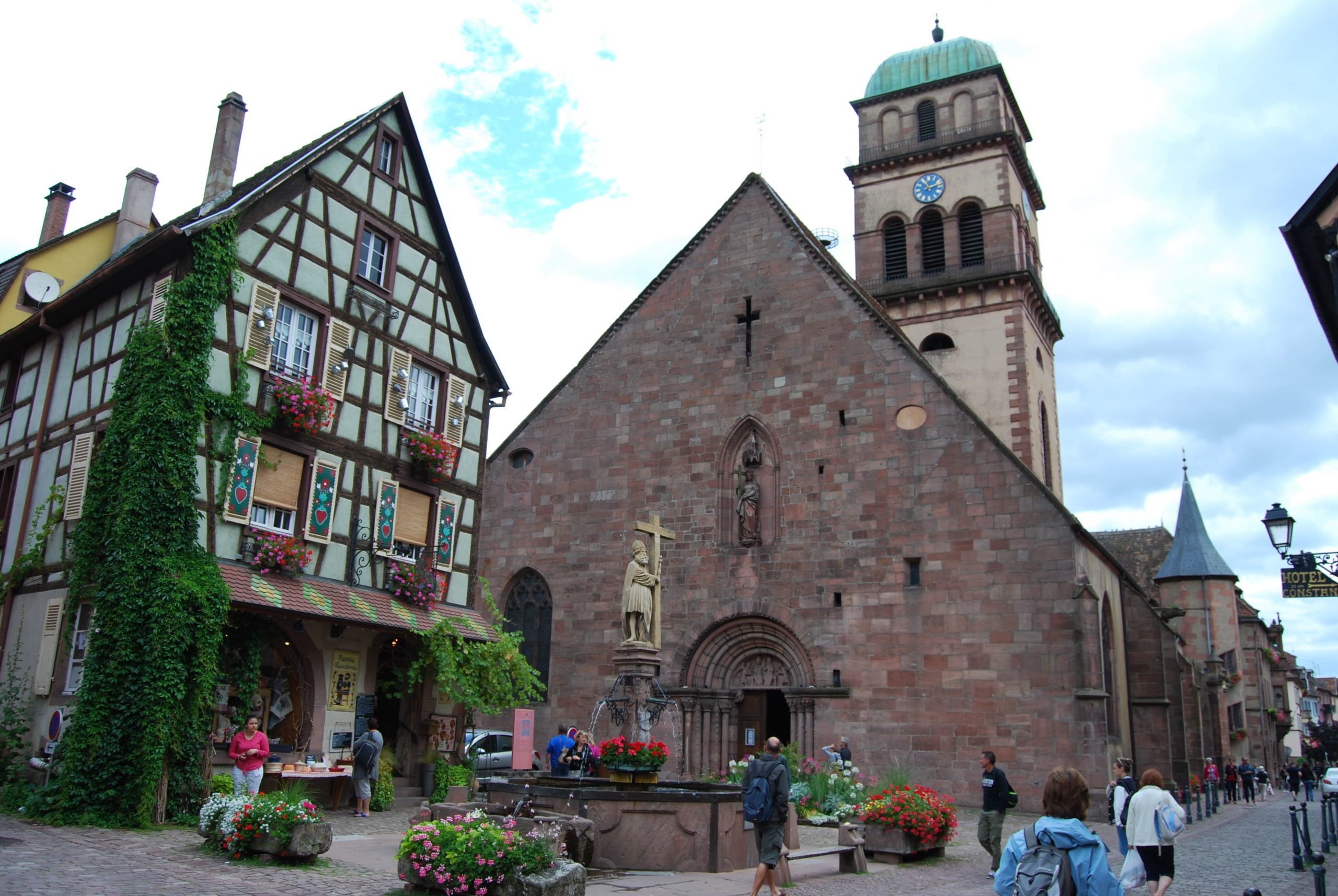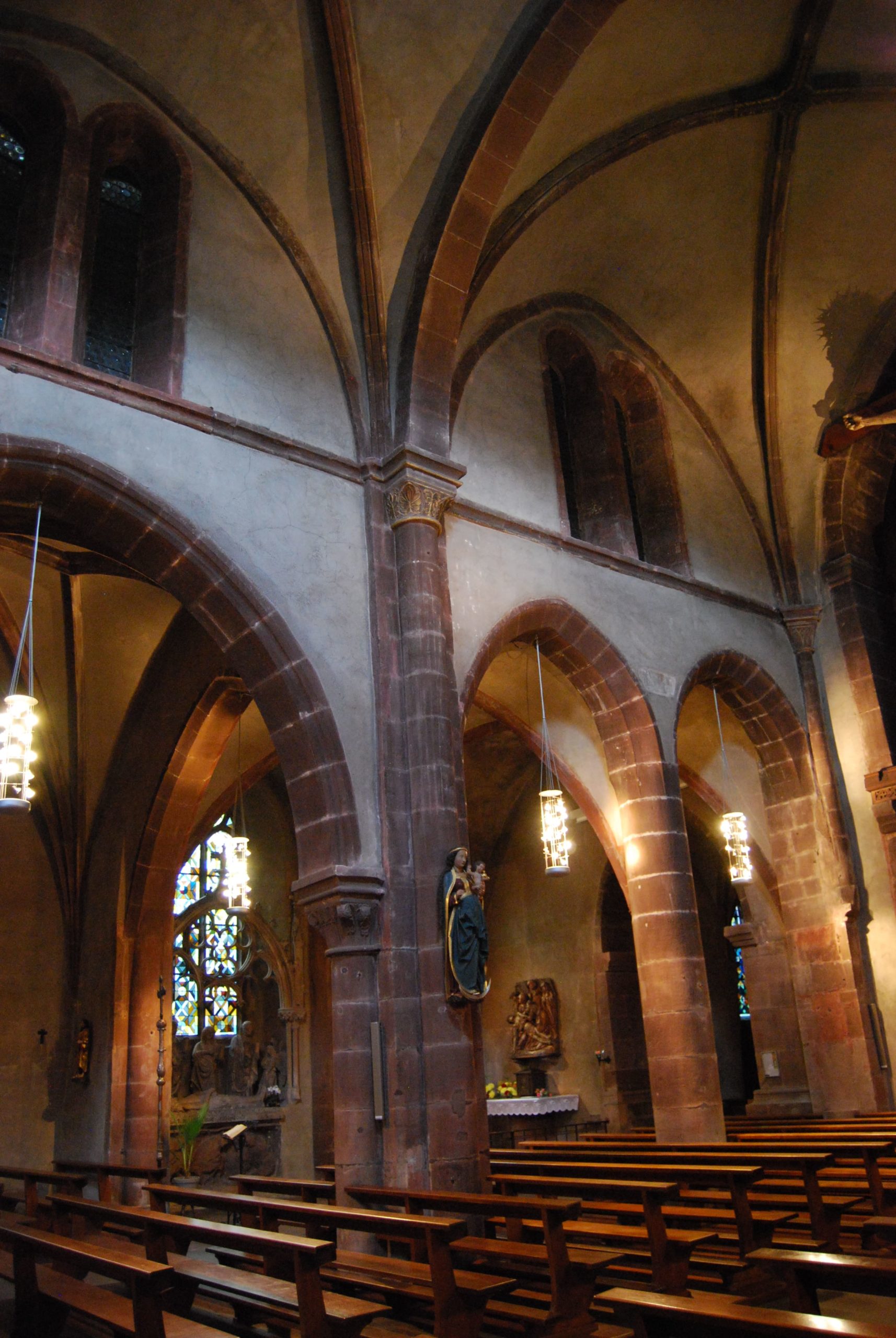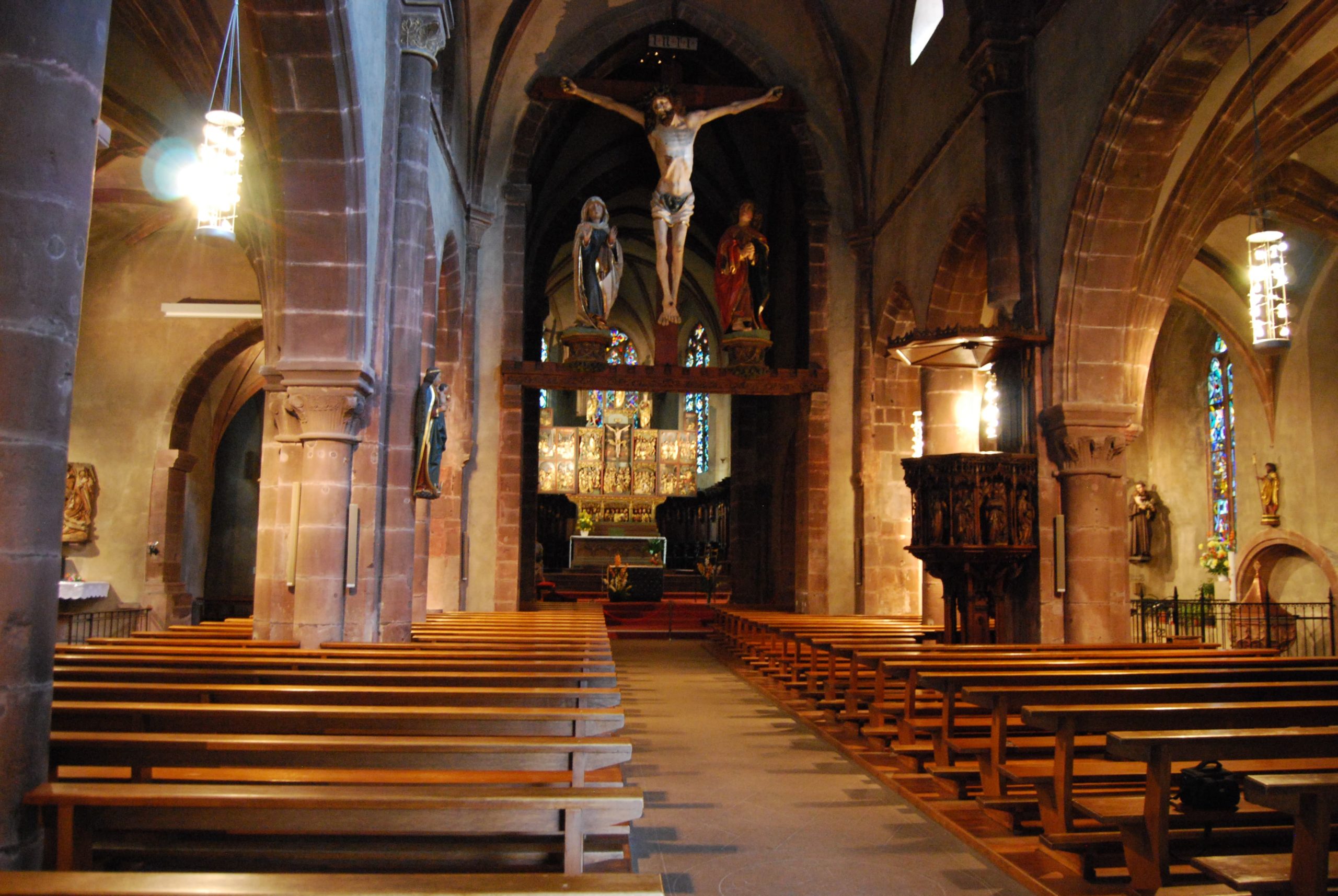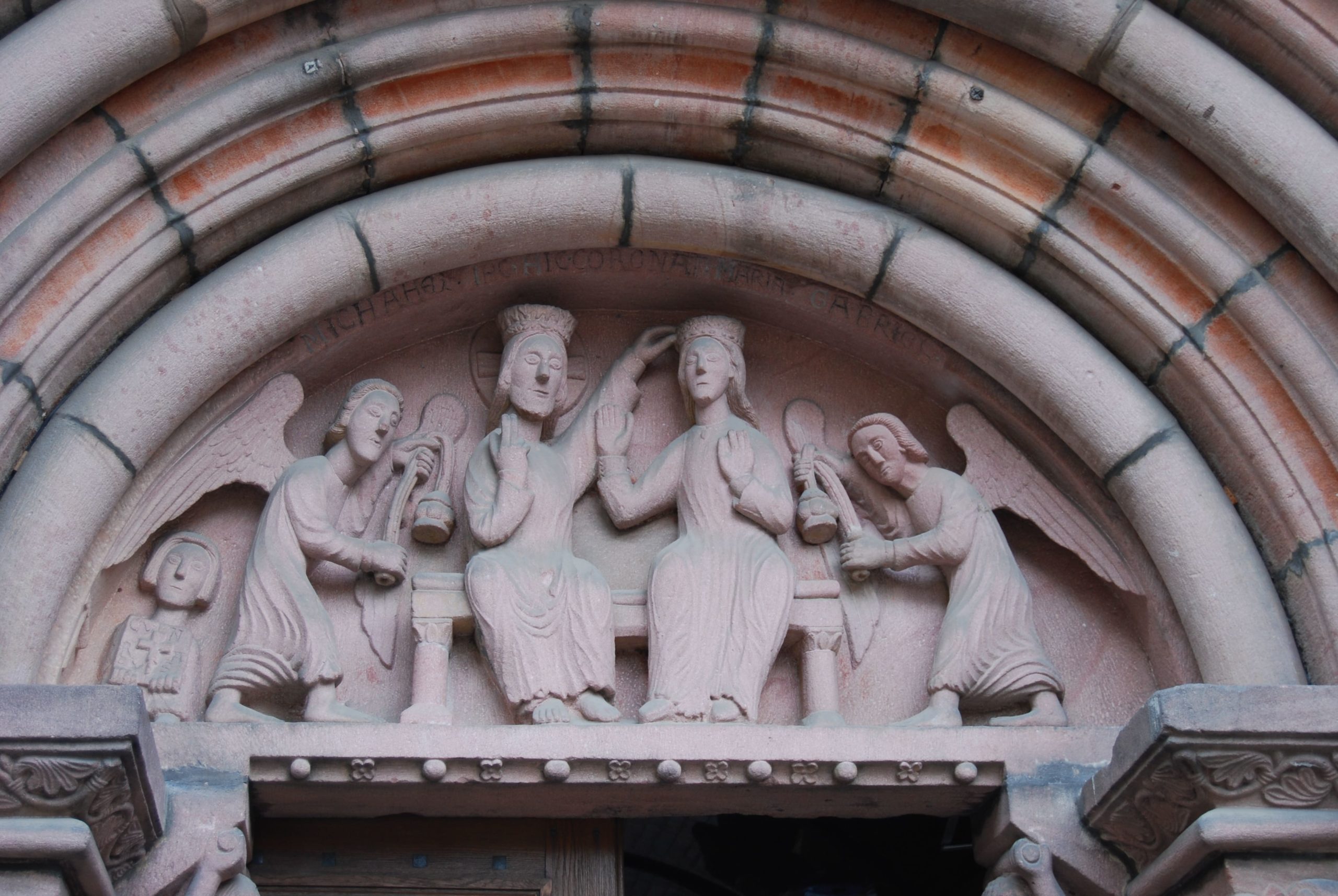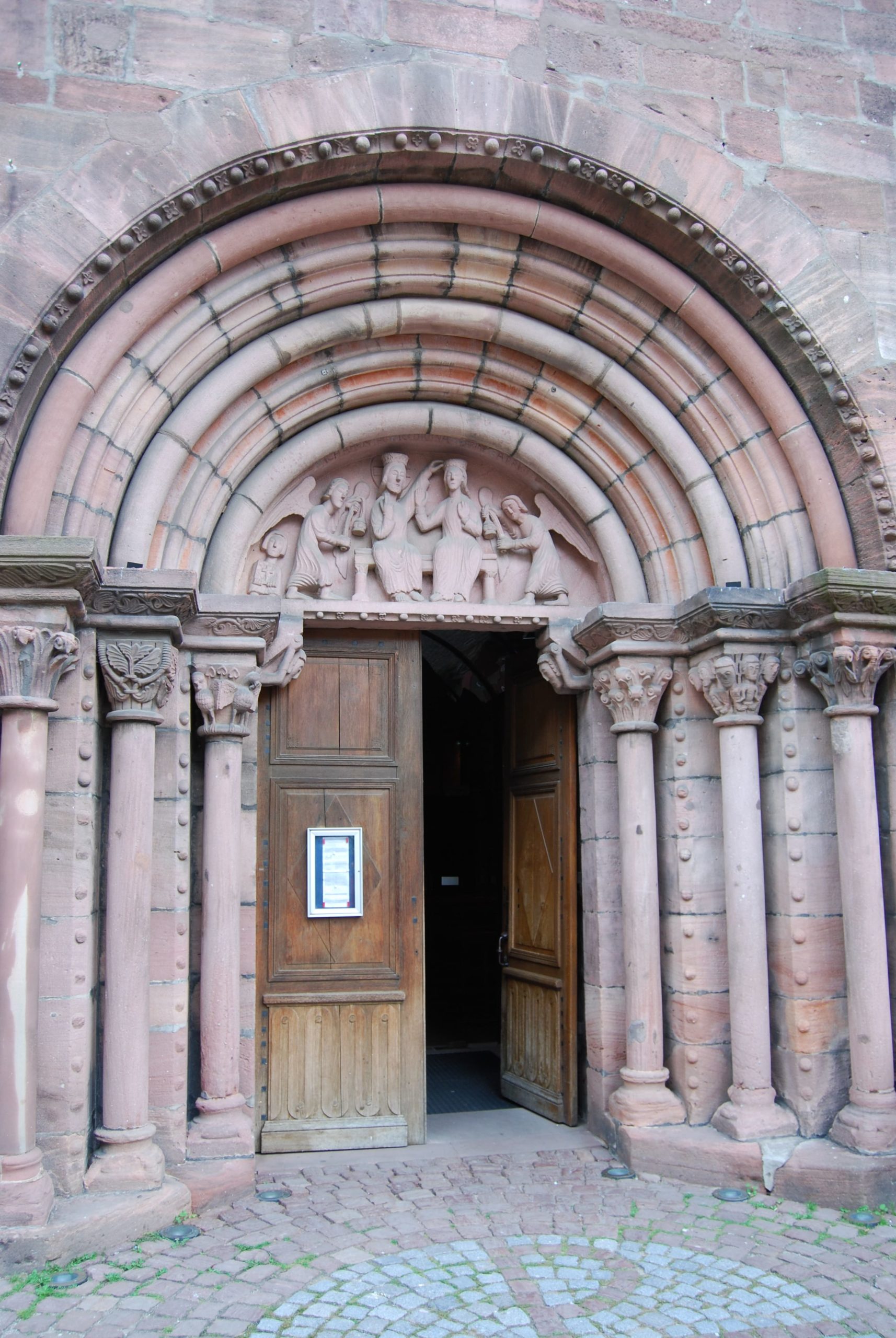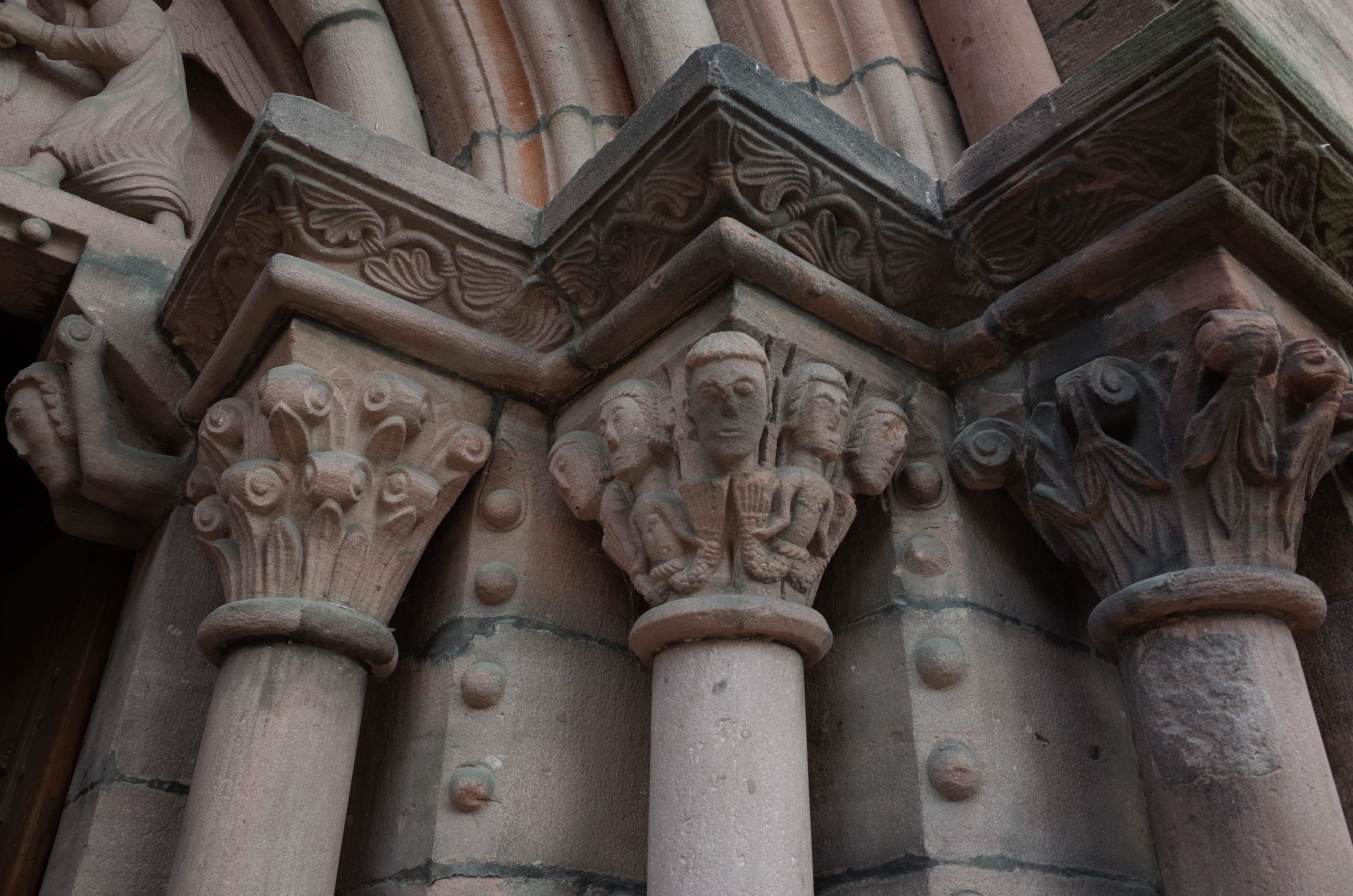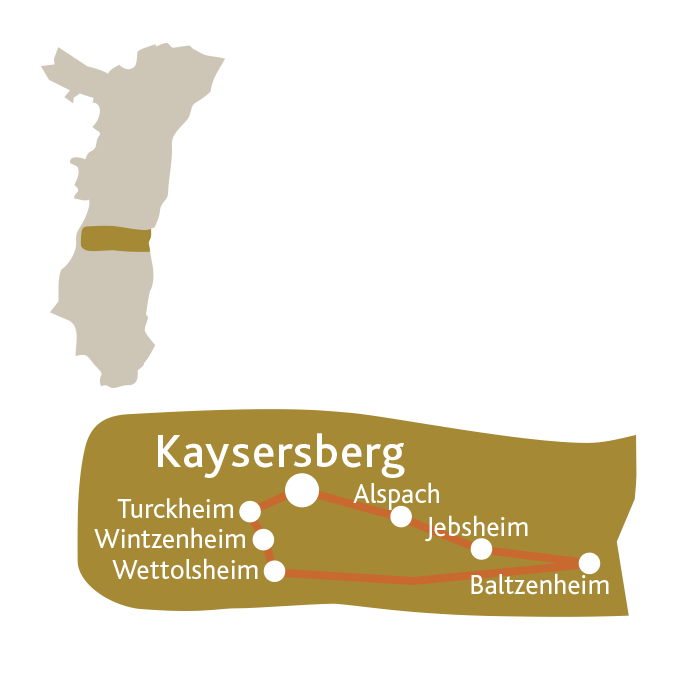Kaysersberg
Église Sainte-Croix
Presentation
The main nave and portal were built between 1230 and 1235. This building is an example of late-Romanesque art, contemporary with the Chartreuse workshop that introduced the Gothic style to
the south transept of Strasbourg cathedral. The tympanum of the portal depicts the Coronation of the Virgin by Jesus, surrounded by the archangels Gabriel and Michael. A self-portrait of the sculptor appears in the right-hand corner of the tympanum (a figure holding an open book bearing the name „Conradus“). This tympanum is an archaizing version of a Francilien model in vogue in the early 13th century, which appeared on the south portal of Strasbourg cathedral around 1225.
Historique : A conflict between Frederick II of Hohenstauffen and the Duke of Lorraine led to the construction of Kaysersberg’s ramparts in 1227. The construction of the Church of the Holy Cross cannot predate that of the town.
Photo gallery
Get more info
Kaysersberg is located on an ancient Roman road that linked the Alsace plain to the Lorraine side of the Vosges mountains. In the 13th century, the Hohenstaufen family built the castle, a town wall and the parish church.
Following major alterations in the 15th century, all that remains of the original Romanesque church are a few sections of the interior and, on the outside, this remarkable portal with its historiated tympanum.
This is an archaic style of stepped tail. Built around 1235, it is adorned with semi-circular arches separated by roundels. The imposts and capitals bear eagles, mermaids and palmettes.
This ensemble was created around 1235. It depicts the coronation of the Virgin Mary, seated to the left of Christ. The archangels Michael and Gabriel flank them.
The style is that of a local sculptor, with a Romanesque tradition, copying an important and innovative Gothic work, but the attitudes of the figures remain fixed. The work was inspired by the tympanum of the south portal of Strasbourg Cathedral. There are also similarities with the tympana of Sigolsheim and Basel.
The artist or architect is depicted on this tympanum holding a book bearing his name: Conradus.

